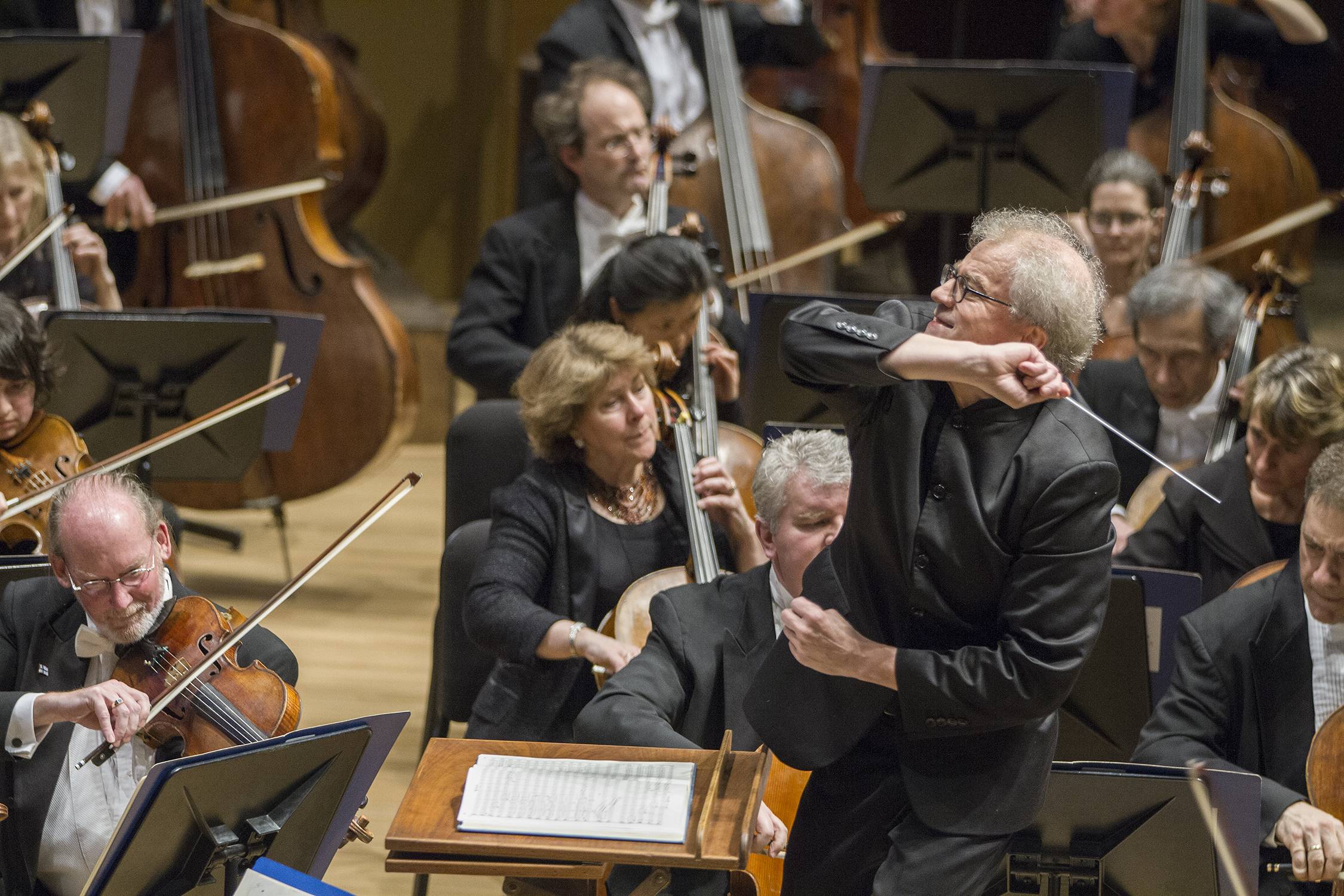The January 25th concert of the Minnesota Orchestra is a special event bringing this great orchestra to Urbana’s Krannert Center for the Performing Arts for the first time in living memory. Its maestro, the great Osmo Vanska, will make his Krannert debut with a program of 19th century music.
The Minnesota Orchestra’s history goes back to a few months before the Wright Brothers’ first flight. It was founded as the Minneapolis Symphony Orchestra by Emil Oberhoffer in 1903, and he remained its Music Director until 1922. By 1924, the Minneapolis Symphony had achieved enough status in the world of classical music to make its first recordings.
Over the years under such distinguished maestros as Eugene Ormandy, Dimitri Mitropoulos, Antal Dorati, Stanislaw Skrowaczewski, Neville Marriner and Eji Oue, this so called “second tier orchestra” was in demand for both recordings and concert tours.
In 1968, its name was changed to the Minnesota Orchestra, although its headquarters remained in Minneapolis. By 1974, a splendid new facility, Orchestra Hall in Minneapolis, was built, and the future of this amazingly successful ensemble from a modest sized municipality seemed to be on cruise control. But, even on cruise control, there would be bumps in the road.

As the orchestra’s fortunes continued, it was not a straight-line progression. Money issues would be a constant problem as recording contracts varied after the departure of Antal Dorati. In the next decades, its fortunes fluctuated. In 1974, Orchestra Hall in downtown Minneapolis, became the new home of the orchestra, but it wasn’t until 1979, that it saw the first strike of its players.
Things seemed to stabilize in 2003, when Osmo Vanska was hired as permanent Music Director. Here was a world class conductor with clout in the recording industry, and things went smoothly until 2008.
In that memorable year of economic meltdown, many organizations’ investment portfolios diminished, and the Minnesota Orchestra was no exception. To fund planned building projects and attract state bonding, the orchestra’s board sold millions of dollars of securities from their investment portfolio at a big loss. As recording sales dropped, touring bookings slowed and operating expenses kept mounting, the orchestra was posting deficits of $2.9 million in 2011 and $6 million in 2012.
2012 was a grim year for the Minnesota Orchestra. With a diminished investment portfolio and recent multi-million dollars losses, the contract negotiations with the musicians was a disaster. This led to a lockout in the fall of 2012 by Minnesota Orchestra’s governing board that would lead to the cancellation of the entire 2012-2013 season. The bad feelings created by these events led to Osmo Vanska’s resignation in the spring of 2013.
 Yet in mid-January of 2014, the governing board reached an agreement with the musicians and ended the lockout. Concerts resumed at Orchestra Hall in April of 2014, and Osmo Vanska was lured back as music director. The road to recovery was on as recording and touring went into high gear, and in the summer of 2017, Vanska’s contract was continued through the 2021-2022 season.
Yet in mid-January of 2014, the governing board reached an agreement with the musicians and ended the lockout. Concerts resumed at Orchestra Hall in April of 2014, and Osmo Vanska was lured back as music director. The road to recovery was on as recording and touring went into high gear, and in the summer of 2017, Vanska’s contract was continued through the 2021-2022 season.
The Minnesota Orchestra has just recently received its fourth Grammy Award nomination for their recording of Mahler’s fifth symphony. It’s only Grammy win came in 2014, the year of recovery from the lockout, for Osmo Vanska’s recording of Sibielus’ symphonies 1 and 4.
On January 25, this revitalized orchestra, with Osmo Vanska at the podium, will serve up a sampling of 19th century masterworks, beginning with a work of his fellow countryman, Jean Sibelius’ En Saga. Inon Barnatan will be the soloist in the first piano concerto of Peter Tchaikovsky. The evening’s finale is the seventh symphony of Beethoven.
The Minnesota Orchestra will be performing at the Krannert Center for Performing Arts on January 25th at 7 p.m. For further information or to reserve tickets, click here.
Photos provided by Minnesota Orchestra.








